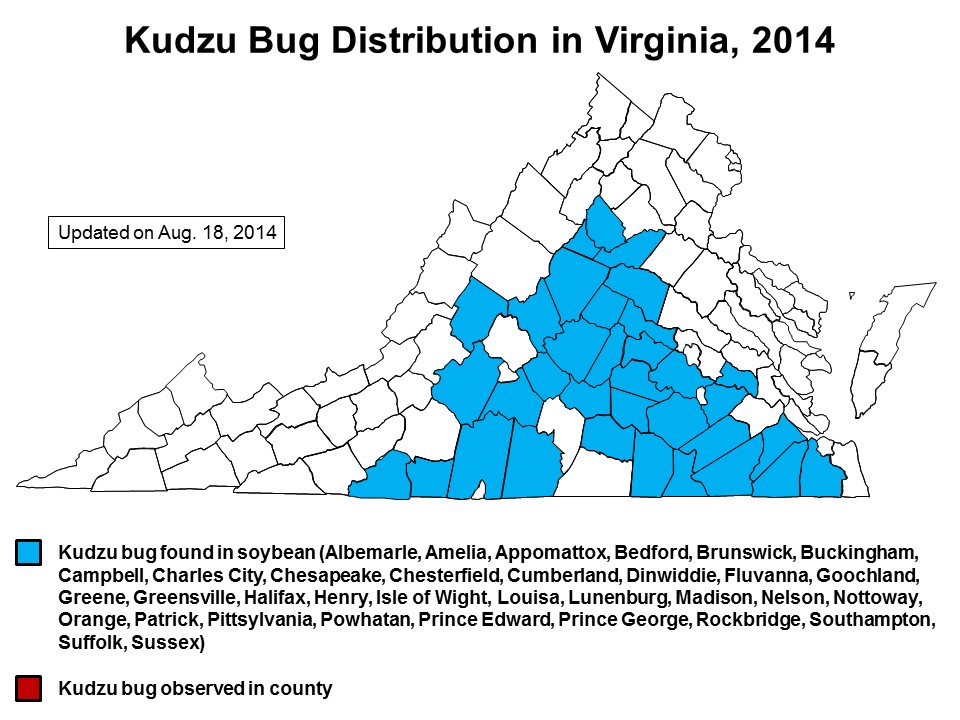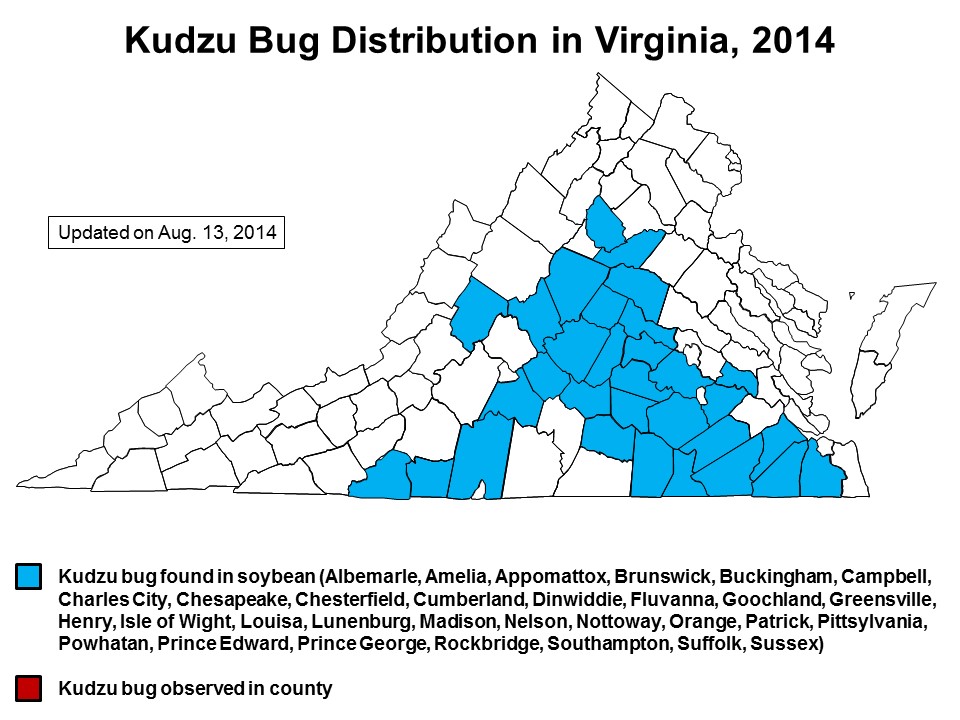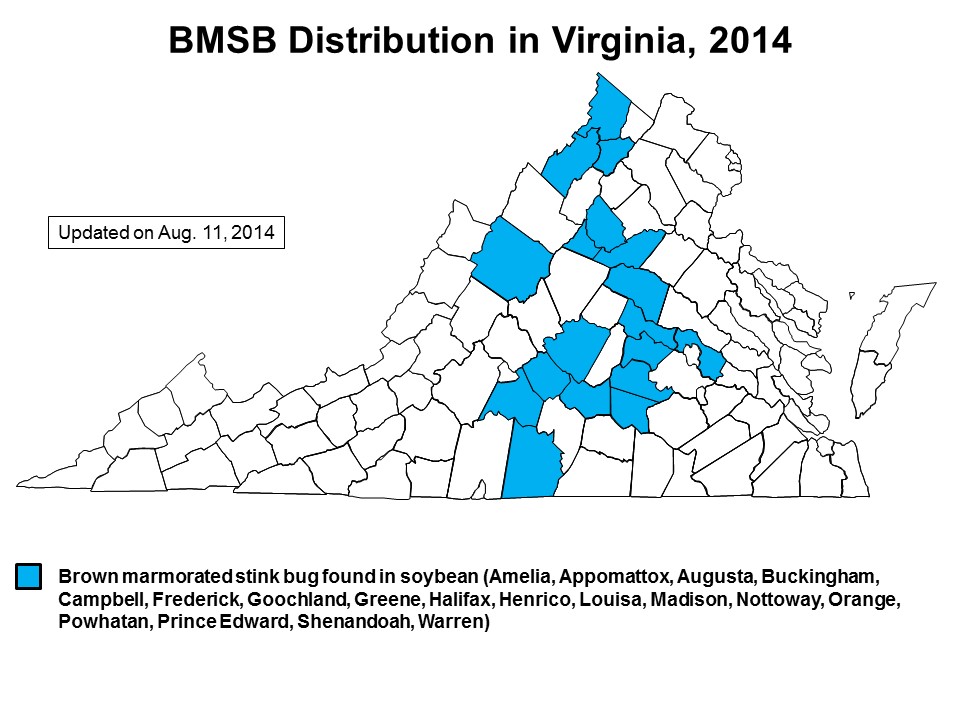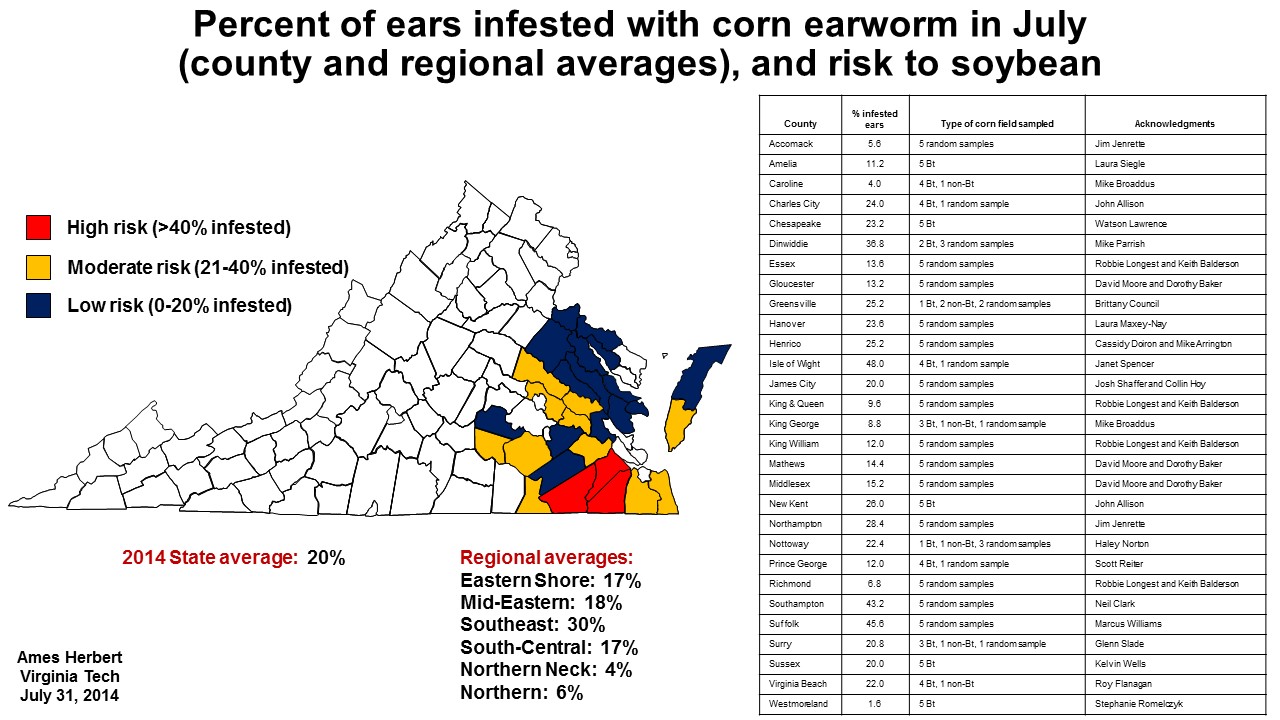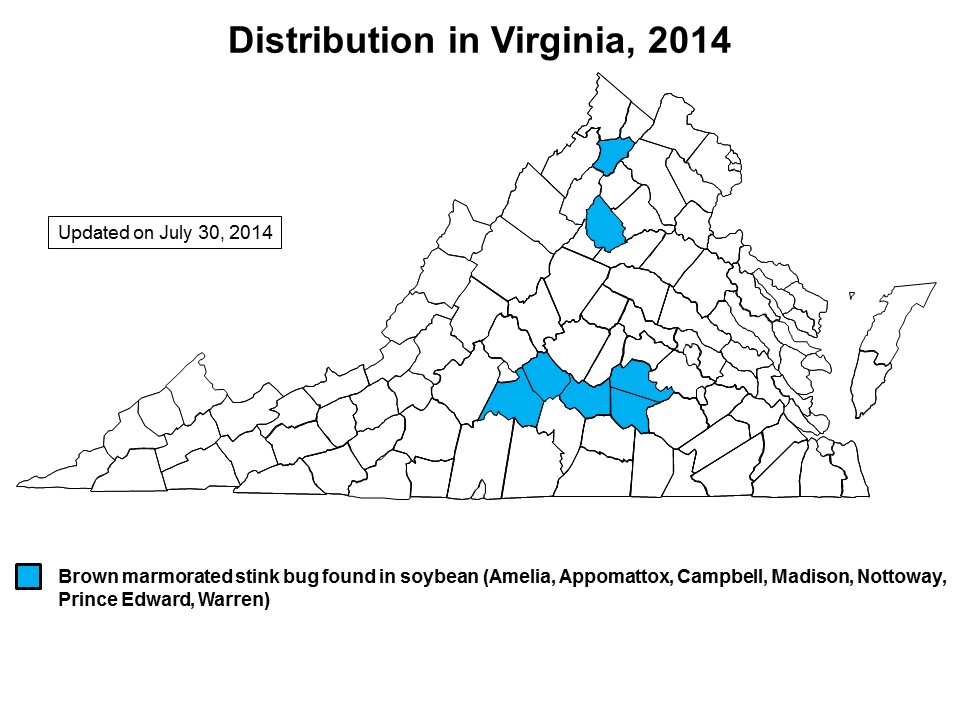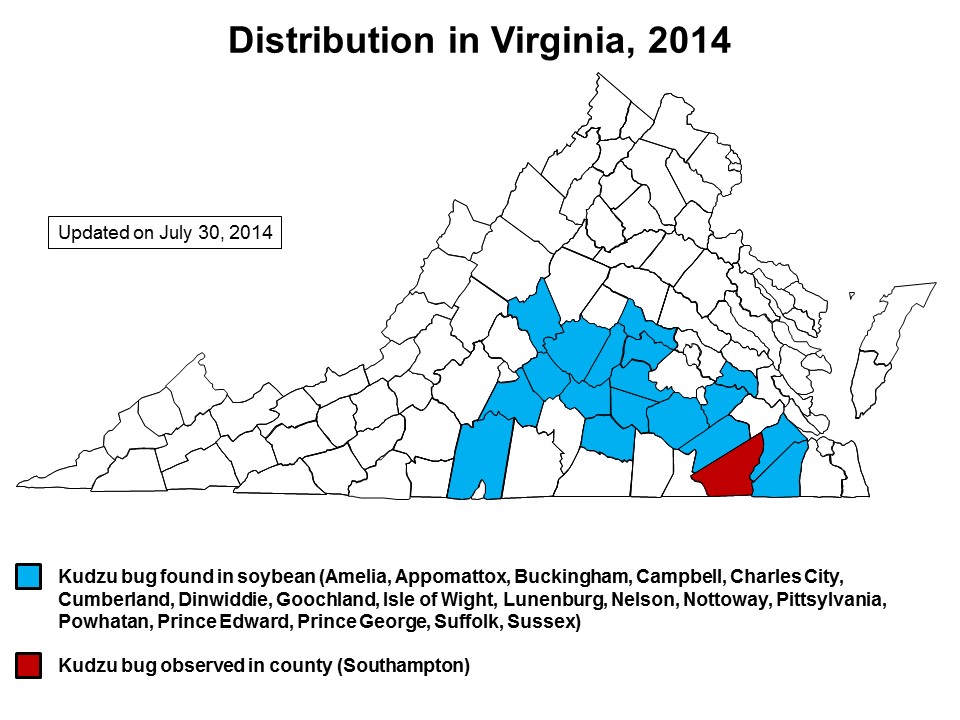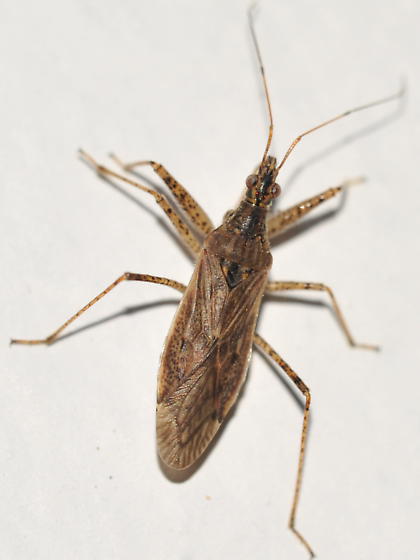BMSB was found in soybean in nine new Virginia counties this past week: James City, Caroline, Stafford, Culpeper, Fauquier, Nelson, Rockbridge, Henry, and Montgomery. The highest numbers of BMSB occurred in a Warren field (5 nymphs and 4 adults per 2-minute visual inspection), followed by Augusta (5 nymphs and 1 adult per 2-minute visual), Fauquier (5 nymphs), Buckingham (4 nymphs), James City (3 nymphs, 1 adult), and Appomattox (3 nymphs, 1 adult). Thanks to our soybean scouts and to Dr. Tom Kuhar for their updates this week.
Category Archives: Soybean
Kudzu bug distribution in Virginia–August 21, 2014 report
Our soybean scouts detected kudzu bug in two new Virginia counties this past week (Halifax and Greene); both of these locations had low numbers. The highest numbers of kudzu bugs reported by our scouts for the past week were in a Pittsylvania soybean field (8 nymphs and 3 adults per 15 sweeps), followed by Goochland (4 adults per 15 sweeps) and Henry (3 nymphs and 2 adults per 15 sweeps). Additionally, VCE Agent Scott Reiter reported high numbers of kudzu bug adults along the edge in a Prince George soybean field that was bordered by kudzu (50 adults in 15 sweeps in the first 30 feet of field, diminishing to 3-4 adults per 15 sweeps at 100 feet from the field edge). Scott found other fields with 0-3 kudzu bugs in 15 sweeps.
Update on kudzu bug and brown marmorated stink bug
We are providing updated maps of the distribution of kudzu bug and brown marmorated stink bug in Virginia. Although we have added a few new counties since last week, overall the populations of both of these pests are very low compared with last year. To our knowledge, no soybean fields have even come close to reaching threatening levels or thresholds.
Most kudzu bug egg masses that we are finding have already hatched indicating that the second generation is occurring. This pest has only two generations so if this second generation stays small, as it appears, we may not have to treat any fields this year.
Brown marmorated stink bug levels are very low. Although a few can be found in many fields, none are reaching high levels. All of this is good news for growers. But, the season is far from over so stay vigilant.
Helicoverpa zea (aka corn earworm, bollworm) resistance monitoring update–Aug. 7, 2014
Our corn earworm/bollworm moth catches went up this week allowing us to conduct adult vial tests on 128 moths. Vials were treated with the standard 5 microgram rate of cypermethrin (a pyrethroid insecticide), or acetone (the untreated check). This week, 39.4% of moths survived the test, which is high. The season-long average is now 35% survival (based on 190 moths evaluated) and is higher than what we saw in 2013 (see graphs, below). Survivorship at this level indicates that non-pyrethroids may need to be considered when an insecticide is needed for this pest in some regions, so please keep this in mind when scouting and then making management decisions in the upcoming days.
Results of the Corn Earworm Survey in Virginia Field Corn—2014
Annually, we conduct a survey to estimate Helicoverpa zea (corn earworm) infestation levels in field corn in mid- to late July. Corn is considered a nursery crop for corn earworm, allowing the pest to complete a lifecycle and then move on to other crops such as soybean, cotton, and peanut in August. Over 30 years of data show that there is a linear correlation between the infestation level in corn and the amount of soybean acreage that gets treated with insecticide for this pest.
To conduct the survey this year, the number of corn earworms found in 50 ears of corn was recorded in 5 corn fields in each of 29 counties, totaling 7,250 ears and 145 fields sampled. When fields were known to contain Bt or non-Bt corn, this was noted. Otherwise, samples were considered to be random and assumed to be representative of the actual Bt/non-Bt composition in each county. Age of corn earworms, or if they had already exited the ears, was also recorded (data not shown). We greatly appreciate the help of Virginia Cooperative Extension Agriculture and Natural Resource (ANR) Agents, Virginia Tech faculty and staff, and volunteers in this effort. These cooperators are acknowledged in the attached Figure. We also would like to thank the many growers who graciously allowed us to inspect their fields for corn earworm.
Results of the survey are provided below (click on the Figure to enlarge it). Statewide, approximately 20% of ears were infested with corn earworm. For comparison, 18% of ears were infested in 2013, 30% in 2012, 33% in 2011; 40% in 2010; and 36% in 2009. Regional averages for 2014 were 6% infested ears in Northern counties, 4% in the Northern Neck, 18% in Mid-Eastern, 17% in South-Central, 30% in the Southeast, and 17% on the Eastern Shore.
This survey is intended to be a representative sample, not a complete picture. We always recommend scouting individual fields to determine exactly what is happening in terms of corn earworm as well as other pests and crop problems. Also, please check the black light trap reports on the Virginia Ag Pest and Crop Advisory and other reports posted weekly to keep up-to-date on the insect pest situation.
Brown marmorated stink bug update for soybeans
As of this week, brown marmorated stink bug adults, nymphs, and egg masses are beginning to show in a few soybean fields in seven counties (Madison, Warren, Campbell, Appomattox, Prince Edward, Amelia and Nottoway). Number are still very low but more are expected as they move from border trees into fields. This early movement is coinciding with the maturity of the soybean crop. Most of the plants in the infested fields are in late R3-early R4 growth stages. When plants reach the R5 stage (seed fill), they will become even more attractive to stink bugs that target young seed to feed on.
Kudzu bug update for soybeans
The number of counties where kudzu bugs have been found in soybean fields has increased a lot since last week. Last week they were found in 4 counties and this week a total of 18 counties. In many cases both nymphs and adults are present. To my knowledge, none have reached the threshold for this second generation, that is, 1 nymph per sweep. Keep in mind that as much time as we put into this statewide survey of soybean fields, our scouts can only visit a small fraction of the fields. Our recommendation is that you check all of your fields. The best way is to use a standard sweep net doing several 15 sweep samples in a field. If you need a sweep net, here is one recommendation (there are several other sources): Bioquip, the sweep net with the 2 ft long handle, item #7625HS (https://www.bioquip.com/search/DispProduct.asp?pid=7625HS). Note that the site lists two handle lengths, again, we recommend the one with the 2 ft long handle.
Predator profile: Damsel bugs
Damsel bugs (10 mm in length) are common predators in southeastern row crops. These insects feed on corn earworm larvae and eggs, other caterpillars and thrips among other prey. Both adults and immature damsel bugs are predators. Adults are brownish with an elongate torso and head with long thin legs. Immatures have a similar appearance with shortened wings. According to a 2013 survey in Virginia soybean, damsel bug populations are highest in August and early September. Damsel bug feeding rates are highest at night, in contrast to high daytime feeding rates common to many predatory insects such as lady beetles. Keep in mind that broad-spectrum insecticides will significantly decrease damsel bug populations in soybean fields.
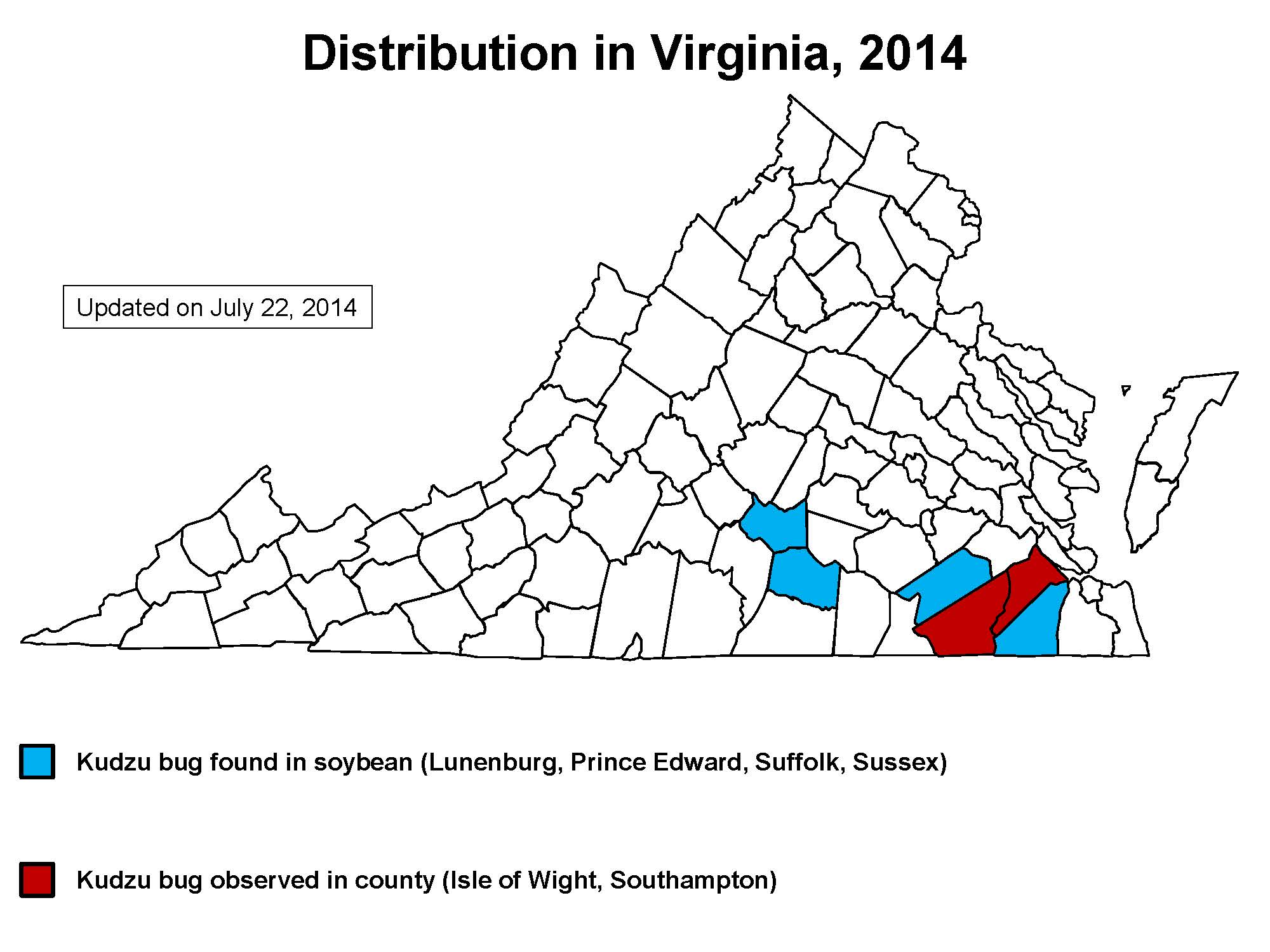
Soybean kudzu bug update—July 24, 2014
Our scouts have reported finding kudzu bugs in soybean fields in 4 counties. Nymphs as well as adults were found in two of those counties, Lunenburg and Prince William. Adults and nymphs were found in kudzu, only, in two other counties. All are near the southern border of the state. We are expecting this to change pretty rapidly so we strongly recommend that you start checking fields. This is most easily done with a sweep net. Go to several areas of a field, especially along the edges, and do several 15 sweep samples. At this point in the season, treatment thresholds should be based on the 1 nymph/sweep threshold.
Where are the kudzu bugs–soybean update
The big question today is—where are the kudzu bugs we expected to see in our soybean crop? As of this week, we have not seen any adults or nymphs in the early planted full season crop. In fact, the same situation is being reported for much of the eastern US. Dominic Reisig at NCSU says that even in NC, the only reported infestations are from southernmost counties.
Last summer by this time we were seeing many full season early planted files with infestations of adults that have moved from adjacent overwintering sites. The only bugs we have found so far have been in kudzu patches. So, what’s the difference in years and why the delayed movement of adults? All we can say is that it must be related to the colder than normal temperatures we experienced during the winter. We know that in the Suffolk area there were at least two nights when temperatures dropped below zero (æF), and of course it was even colder north and west of us. Could those cold temperatures have killed some of the overwintering adults reducing the overall population levels?
We do know from our adult overwintering emergence traps that were placed throughout much of the state that adults survived and emerged this April and May in about 12 counties in the southern part of the state. Why they did not move into early planted soybean fields is another unanswered question.
From what I can gather from reading and talking with other entomologists in the southeast, 2014 is shaping up to be similar to 2011 when the first generation of kudzu bugs developed in kudzu (mostly) and other alternate hosts and only the second generation moved into soybean fields. This certainly seems to be what is happening this year. In some ways this scenario, if it plays out, will simplify the field scouting and threshold determination. The ‘original’ kudzu bug threshold developed in the southeast was based on this second generation that moved into reproductive stage (flowering—early pod) soybean fields—and it is based on number of nymphs (see below). We have initiated our 2014 soybean insect pest survey so will be reporting updates as they come in so stay tuned.
Treatment Thresholds for 2nd Generation Kudzu Bugs, Nymphs Present
Sweep Net
” An average of 1 nymph/sweep, 15/15 sweeps
” Take at least ten 15-sweep samples to represent the entire field
” Sampling should not be biased by sampling close to field edges where populations may by congregated
Canopy Observation
” At least 10 observation spots representing the entire field
” Nymphs easily found on main stems, leaf petioles or leaves


